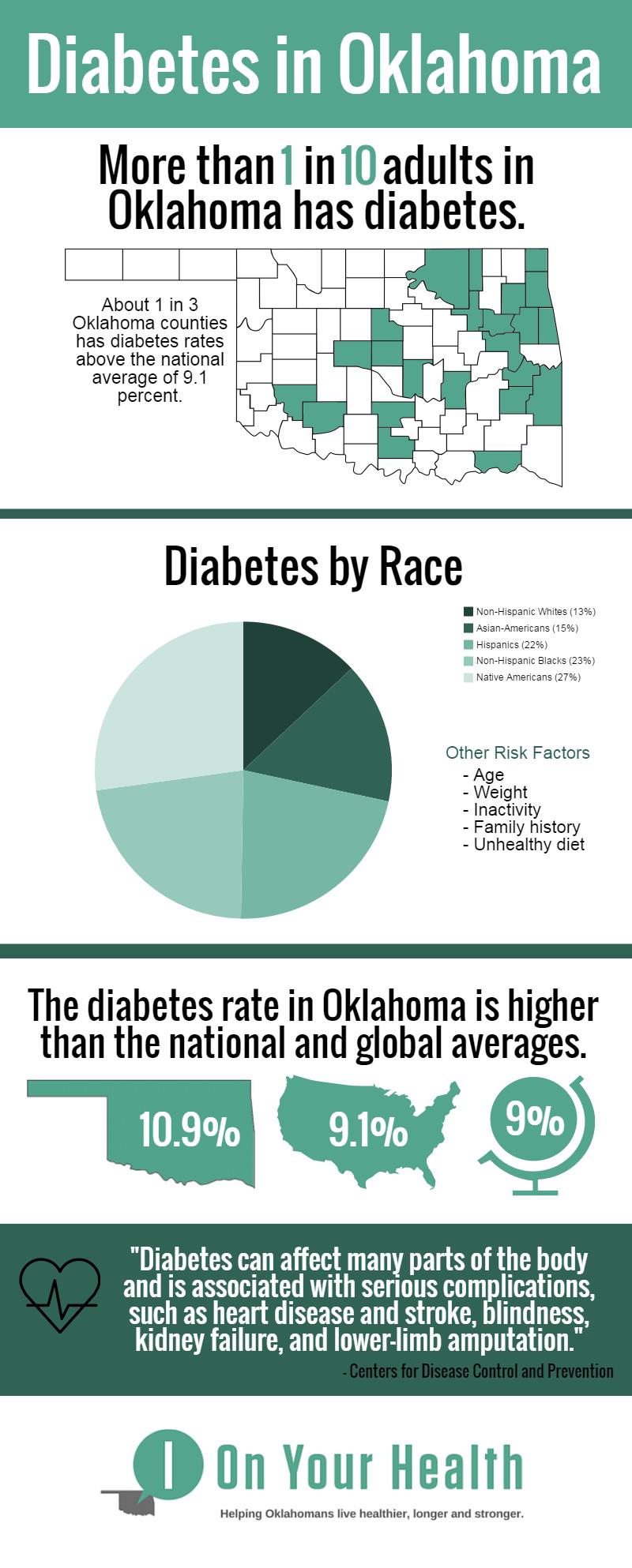World Health Day Focuses on Diabetes, a Common Problem in Oklahoma
Posted in

Diabetes is one of the leading causes of death in Oklahoma, and it’s a disease that is on the rise worldwide.
Today, 347 million people have diabetes – a number the World Health Organization expects to double in the next 20 years. The international organization is putting a spotlight on the disease this year for World Health Day, which is April 7.
Diabetes is a worldwide problem, but it presents differently in different countries. For example, in developing countries, the most common age of a diabetes patient is between ages 35 and 64. But in developed nations like the United States, most people who have diabetes are age 65 and older.
The same is true for Oklahoma, which has the highest diabetes rate in the nation among ages 65 to 74. More than one in four Oklahomans in that age range has diabetes.
One of the challenges health experts face is educating people about diabetes risk factors. In the United States, more than 25 percent of people with diabetes are undiagnosed, which puts them at risk for complications, according to the Centers for Disease Control and Prevention. Untreated diabetes can quickly spiral into major health problems. It is the leading cause of blindness, amputation and kidney failure, according to the World Health Organization.
Types of Diabetes
Several forms of diabetes exist. The most common is type 2, which accounts for more than 90 percent of all new diagnoses. The second most common form is type 1, which accounts for about five percent of new cases. Other types, including gestational and genetic-disorder cases, make up less than five percent of new diagnoses.
- Type 1: Beta cells create insulin in the pancreas, but for people who have type 1 diabetes, those beta cells have been destroyed. Our bodies need insulin to keep blood sugar in check, but type 1 diabetics cannot produce enough insulin, if any at all.
- Type 2: People who have type 2 diabetes usually have insulin resistance, which means the body isn’t using insulin correctly. The body demands more insulin, and the beta cells in the pancreas can’t keep up. Risk factors for type 2 diabetes include obesity, genetics, race, low activity levels and other factors.
- Gestational: Pregnant women’s bodies sometimes have trouble regulating glucose levels. Cases of gestational diabetes are most often diagnosed in the second and third trimesters.
- Prediabetes: Prediabetes is a diagnosis that shows a person has high blood sugar, but the level is not high enough to be officially considered diabetes. According to Brent Wilson, a registered dietitian with the INTEGRIS Diabetes Education Program, it is very important to see your doctor annually to screen for diabetes. He says, "By screening often you can detect prediabetes or type 2 diabetes early, and make the appropriate lifestyle changes (nutrition/physical activity/stress reduction) to prevent long-term complications."
As the World Health Organization focuses on the rise of diabetes for World Health Day, Oklahomans and health professionals must be proactive to help stop the rise of diabetes. Education is the first step.

